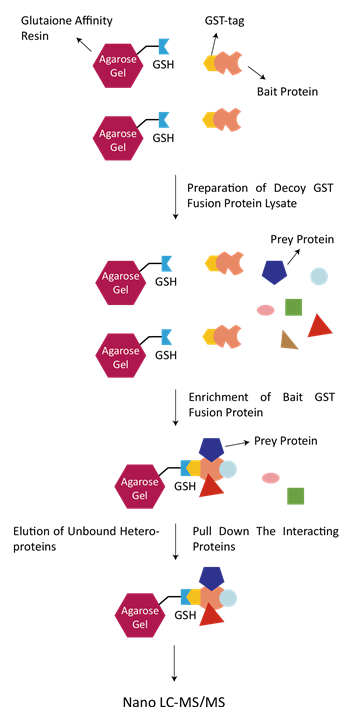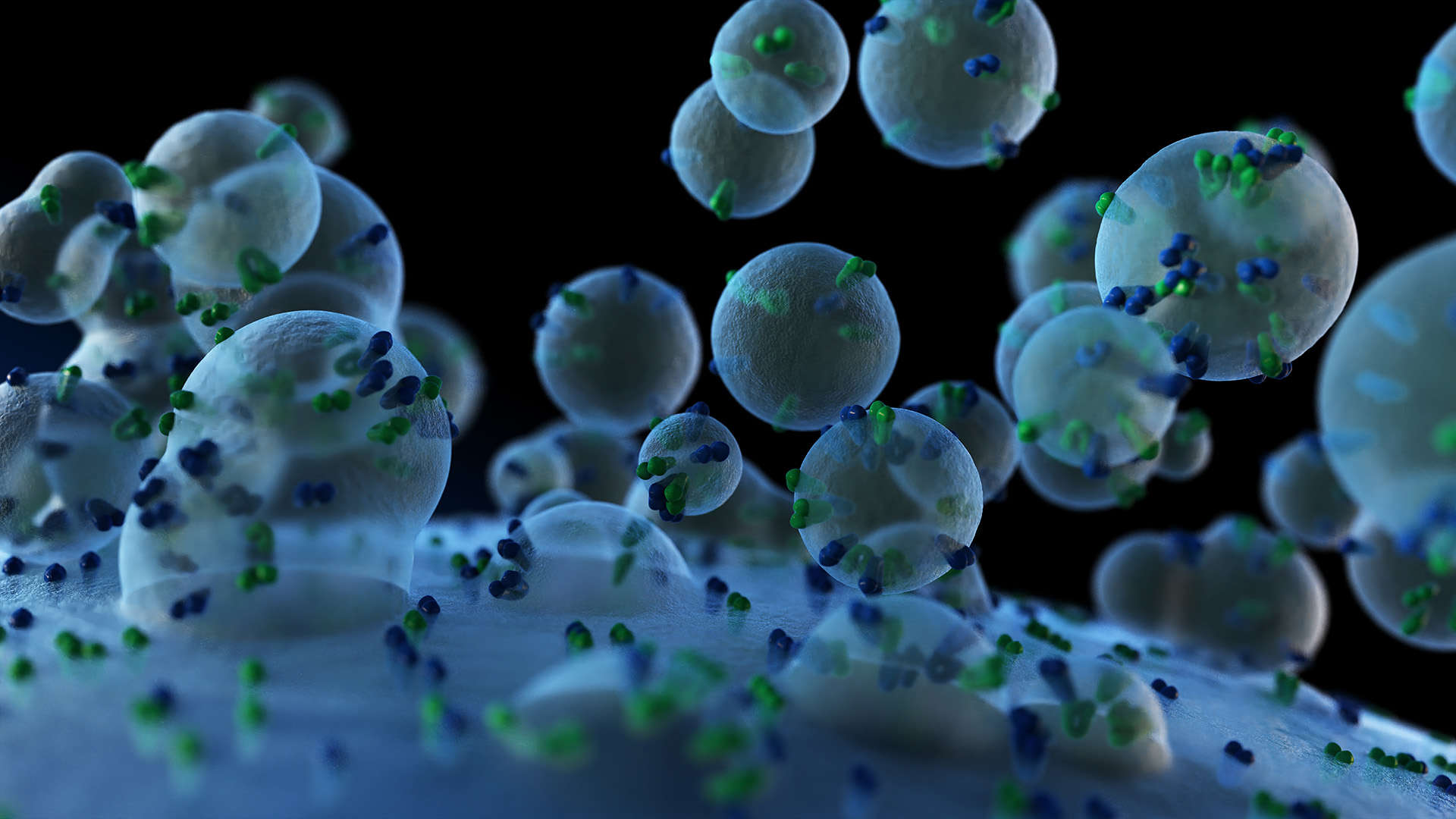GST Pull-Down Service
Online InquiryGST pull-down takes advantage of GST's affinity for GSH-coupled beads. The GST fusion protein is combined with glutathione-coupled spheres, and the protein interacting with the GST fusion protein is purified from the protein mixture. Pull-down technology uses highly purified and enriched bait proteins to capture target proteins with weak interactions or low abundance in cells, greatly improving the efficiency of discovering new target proteins. This method can identify unknown proteins that interact with known proteins, and can also identify whether there are interactions between two known proteins.
Creative Proteomics has rich experience in proteomics and can quickly and accurately perform protein interaction experiments. Combined with a professional LC-MS mass spectrometry platform, Creative Proteomics can provide customers with one-stop technical services for protein interaction analysis based on pull down, with the advantages of high sensitivity and accurate resolution.
The Principle and Process of GST Pull-Down Technology
Fusion expression of the target protein and GST-tagged protein, and purification to obtain the fusion expression protein. The target protein solution is purified through the column. This process captures a trapping protein that interacts with the target protein. The target protein-GST fusion protein (acting as a bait protein) is affinity-cured on the glutathione affinity resin as a support with inverse affinity to the target. The conjugate is subsequently eluted. SDS-page electrophoresis analysis, or combined WB and MS detection, can verify the interaction between proteins or screen the corresponding target proteins.

Advantages of GST Pull-Down Protein Interaction Service:
- Parallel experiments and controls are provided to make the experimental results more reliable
- Creative Proteomics has completed downstream equipment and expertise to provide follow-up research, such as quantitative analysis
- Creative Proteomics can provide silver dye technology with 100 times the sensitivity of Coomassie blue.
- Provide one-stop service from GST protein preparation to protein interaction detection.
Applications of GST Pull-Down Service
- Identify new protein-protein interactions.
- Discover existing protein interactions.
- Isolation of protein-protein complexes.
- Additional quantitative information is provided on the relative amount of bead-bound interacting proteins.
Sample Requirements
- 1D SDS PAGE / 2D PAGE gels samples
- Samples in solution:> 10ug of protein in samples
- Target gene information / target protein information
- Sample transportation: It is recommended to transport samples after lyophilization. The protein in lyophilized samples is very stable. Liquid samples are recommended for dry ice transportation. Short-distance transportation of ice packs is also possible
Want to Know about Other Subcellular Protein-protein Interaction Analysis Techniques?
References
- Schäfer F, Seip N, Maertens B, et al. Purification of GST-tagged proteins//Methods in enzymology. Academic Press, 2015, 559: 127-139.
- Kim S Y, Hakoshima T. GST Pull-Down Assay to Measure Complex Formations//The Hippo Pathway. Humana Press, New York, NY, 2019: 273-280.
- Louche A, Salcedo S P, Bigot S. Protein–protein interactions: Pull-down assay//Bacterial Protein Secretion Systems. Humana Press, New York, NY, 2017: 247-255.
* For Research Use Only. Not for use in diagnostic procedures.



